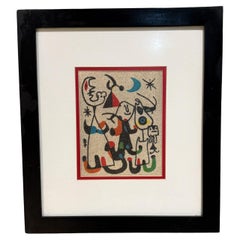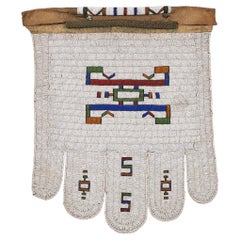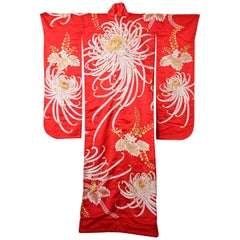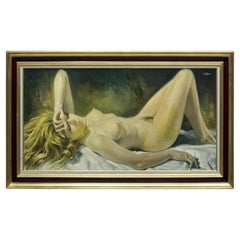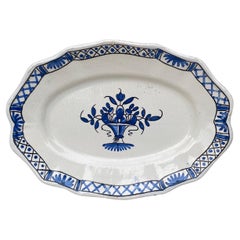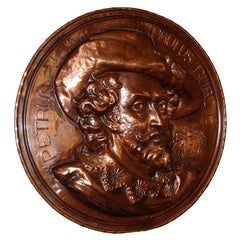USA - Decorative Art
Late 20th Century Mexican Mid-Century Modern USA - Decorative Art
Sandstone
Mid-20th Century South African Tribal USA - Decorative Art
Brass
20th Century Japanese Japonisme USA - Decorative Art
Silk
20th Century USA - Decorative Art
Canvas
1950s French Country Vintage USA - Decorative Art
Faience
Early 20th Century Swedish Baroque USA - Decorative Art
Copper
2010s Tribal USA - Decorative Art
Ceramic, Silk, Hemp, Raffia
1890s English Victorian Antique USA - Decorative Art
Ceramic
Early 1900s Spanish Rococo Antique USA - Decorative Art
Wood, Paint
1750s Antique USA - Decorative Art
Delft
1880s French Country Antique USA - Decorative Art
Ceramic
1830s French Louis XVI Antique USA - Decorative Art
Canvas, Paint
20th Century North American USA - Decorative Art
Metal, Iron, Wrought Iron
1920s French French Provincial Vintage USA - Decorative Art
Ceramic
Late 19th Century Belgian Rustic Antique USA - Decorative Art
Ceramic, Faience, Majolica
1960s American Modern Vintage USA - Decorative Art
Canvas
1880s French Art Nouveau Antique USA - Decorative Art
Ceramic
1890s French Rustic Antique USA - Decorative Art
Ceramic
1980s American Organic Modern Vintage USA - Decorative Art
Metal
1890s French French Provincial Antique USA - Decorative Art
Ceramic
20th Century French USA - Decorative Art
Silk, Wood, Paint
19th Century Peruvian Spanish Colonial Antique USA - Decorative Art
Canvas, Wood
1880s English Victorian Antique USA - Decorative Art
Ceramic
1890s Belgian Rustic Antique USA - Decorative Art
Ceramic
20th Century French USA - Decorative Art
Wood, Paint
1890s French French Provincial Antique USA - Decorative Art
Ceramic
Mid-20th Century Dutch Mid-Century Modern USA - Decorative Art
Ceramic
1920s French Chinoiserie Vintage USA - Decorative Art
Ceramic
20th Century English USA - Decorative Art
Metal
1890s French Art Nouveau Antique USA - Decorative Art
Ceramic
Early 20th Century Nepalese Tribal USA - Decorative Art
Hardwood
20th Century American Mid-Century Modern USA - Decorative Art
Aluminum
1930s French Art Deco Vintage USA - Decorative Art
Ceramic, Faience
Late 18th Century French Louis XVI Antique USA - Decorative Art
Bronze
1890s French Victorian Antique USA - Decorative Art
Ceramic, Faience
1890s French French Provincial Antique USA - Decorative Art
Ceramic
Late 19th Century French Antique USA - Decorative Art
Faience
Early 20th Century South Korean Art Deco USA - Decorative Art
Silk
Late 19th Century English Country Antique USA - Decorative Art
Ceramic, Majolica
19th Century Antique USA - Decorative Art
Bronze, Copper
Early 20th Century Italian Grand Tour USA - Decorative Art
Canvas, Giltwood
Early 1900s German Aesthetic Movement Antique USA - Decorative Art
Ceramic
20th Century Chinese Chinese Export USA - Decorative Art
Porcelain
2010s American USA - Decorative Art
Brass
1980s American Post-Modern Vintage USA - Decorative Art
Canvas, Wood, Paint, Paper
1870s French Victorian Antique USA - Decorative Art
Ceramic, Majolica
20th Century French USA - Decorative Art
Paint, Canvas
Late 20th Century American Mid-Century Modern USA - Decorative Art
Metal
Mid-20th Century Norwegian Mid-Century Modern USA - Decorative Art
Brass
1890s English Victorian Antique USA - Decorative Art
Ceramic
20th Century American Mid-Century Modern USA - Decorative Art
Metal
1880s English Victorian Antique USA - Decorative Art
Ceramic, Faience, Majolica
1880s French Rustic Antique USA - Decorative Art
Ceramic
Early 20th Century Swedish Other USA - Decorative Art
Wood, Paper
1890s French Art Nouveau Antique USA - Decorative Art
Ceramic
18th Century Dutch Antique USA - Decorative Art
Delft, Faience
1920s French French Provincial Vintage USA - Decorative Art
Ceramic
19th Century French Antique USA - Decorative Art
Zinc
1950s French Mid-Century Modern Vintage USA - Decorative Art
Ceramic, Faience
Mid-20th Century Dutch Bauhaus USA - Decorative Art
Enamel
Read More
At Colonial Williamsburg, Everything Old Is New Again
With the help of a new director, the Virginia institution's folk art and decorative arts museums are undergoing extensive upgrades.
New York’s Hirschl & Adler Showcases the American Workmanship and Design Panache of Neoclassical Treasures
The gallery's latest exhibition proves that museum-quality pieces entice and inspire, whether in traditional or more modern interiors.
